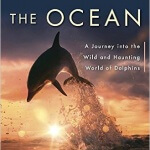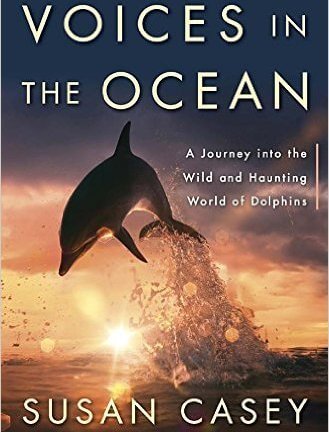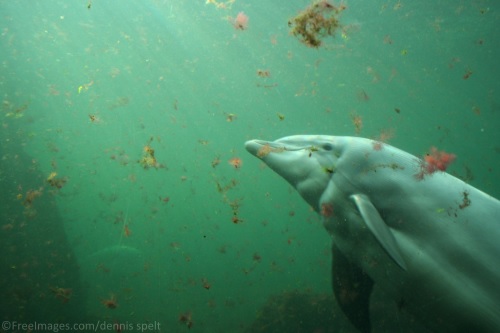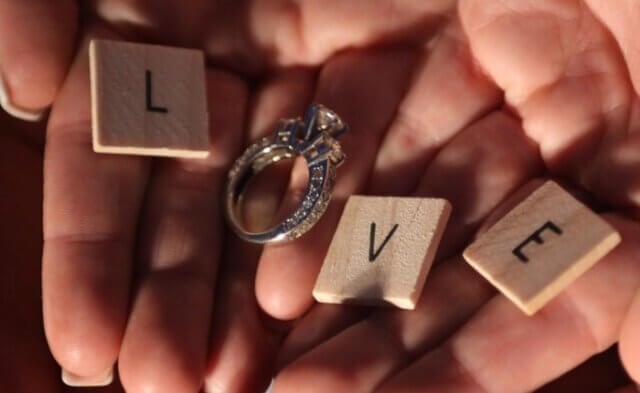 Anyone who has picked up a newspaper lately knows that times are a-changin’ for captive orcas. And while the public’s mindset is evolving about the place of sea life in our world, there’s no other way to say this: Dolphins are in a state of crisis. Wild dolphins are being slaughtered and captured by the thousands for aquariums and marine parks. Author Susan Casey explores what’s happening to dolphins around the world in her book Voices in the Ocean: A Journey Into the Wild and Haunting World of Dolphins.
Anyone who has picked up a newspaper lately knows that times are a-changin’ for captive orcas. And while the public’s mindset is evolving about the place of sea life in our world, there’s no other way to say this: Dolphins are in a state of crisis. Wild dolphins are being slaughtered and captured by the thousands for aquariums and marine parks. Author Susan Casey explores what’s happening to dolphins around the world in her book Voices in the Ocean: A Journey Into the Wild and Haunting World of Dolphins.
Casey visited aquariums and “swim with dolphins” facilities around the world and describes the abject misery that she found there. She took very real personal risks to write this book.
She traveled to the small fishing village of Taiji, Japan, where every year, between September and March, thousands of bottlenose dolphins and many members of other dolphin species are slaughtered. These “drive fisheries” were first exposed by the Academy Award–winning documentary The Cove in 2009, and the outrage it prompted was both worldwide and swift. Yet the massacre continues to this day.
Boats chase pods of dolphins toward the shore while crew members clang metal poles and rocks together underwater, which disorients the animals. These killers have perfected their techniques. Most of the dolphins are butchered, slashed, bashed, or crushed. Those left waiting scream and struggle to escape. The cove literally turns red with blood.
Recently, Taiji fishers introduced a new killing technique: They sever the dolphins’ spines while they’re still alive, spiking metal rods into their blowholes, then plugging them with wooden dowels. The animals’ deaths are long and excruciating.
Most are sold for meat—even though the meat is heavily contaminated with mercury and tastes disgusting. A dead dolphin is worth about $500.
But some dolphins are sold to aquariums, performing-dolphin shows, and “swim with dolphins” programs in China, Korea, Vietnam, and other countries. It’s these lucrative sales that keep the dolphin slaughter going. A young female dolphin can sell for $150,000. In 2012, marine parks bought 156 bottlenose dolphins, 49 spotted dolphins, 24 white-sided dolphins, 14 Risso’s dolphins, two striped dolphins, and two pilot whales from Taiji.
There, Casey was interrogated by police, was verbally assaulted (“DIE DIE DIE!” and “YOU GO TO HELLLLL!”), and had legitimate fears for her safety. She faced an equally dangerous situation in the Solomon Islands, where tens of thousands of dolphins have been killed and necklaces made from their teeth are highly prized. In 2013, villagers killed nearly 1,000 dolphins in one day. Earth Island Institute’s representative there was kidnapped, thrown into the trunk of a car, and beaten within an inch of his life. He survived only because a passerby spooked the killers. And Dolphin Project activist Ric O’Barry routinely gets death threats there.
Casey cites many scientific studies, including those of Dr. Lori Marino, about the cognitive skills and intellect of dolphins. She concludes that they’re just as smart and intuitive as we tend to think they are. They are self-aware. They rescue one another. They know each other by name. The size and complexity of their brains rivals that of our own.
Casey delves into the myths surrounding dolphins and explores the reasons why they’re so fascinating to humans. She touches on some esoteric topics, such as the Hawaii community of “Dolphinville,” where devotees claim to communicate telepathically with dolphins, and discusses a group’s theory that dolphins are actually a superior extraterrestrial species. But don’t let these colorful segues distract you from the ugly reality of what dolphins are facing right now at the hands of humans.
For anyone who has ever said, “I love dolphins,” Casey’s book is a call to action.
PETA is a participant in the Amazon Services LLC Associates Program, an affiliate advertising program designed to provide a means for sites to earn advertising fees by advertising and linking to Amazon.com.






